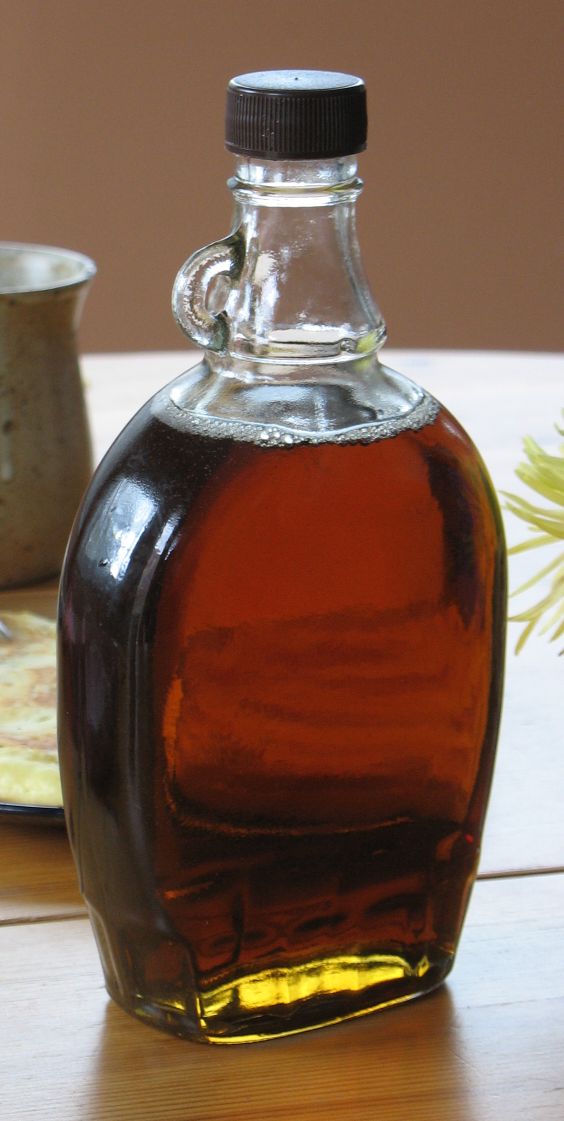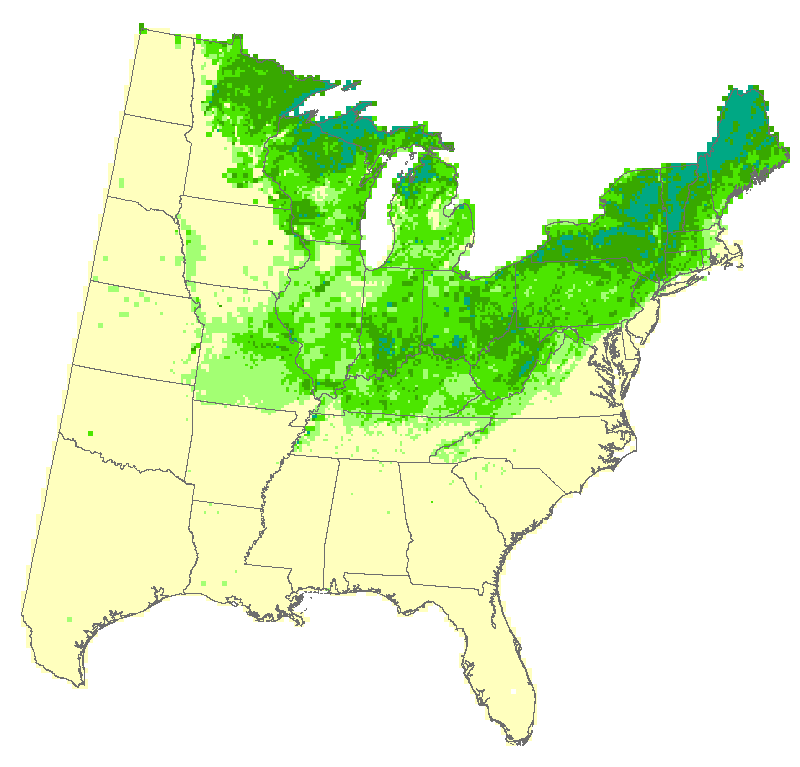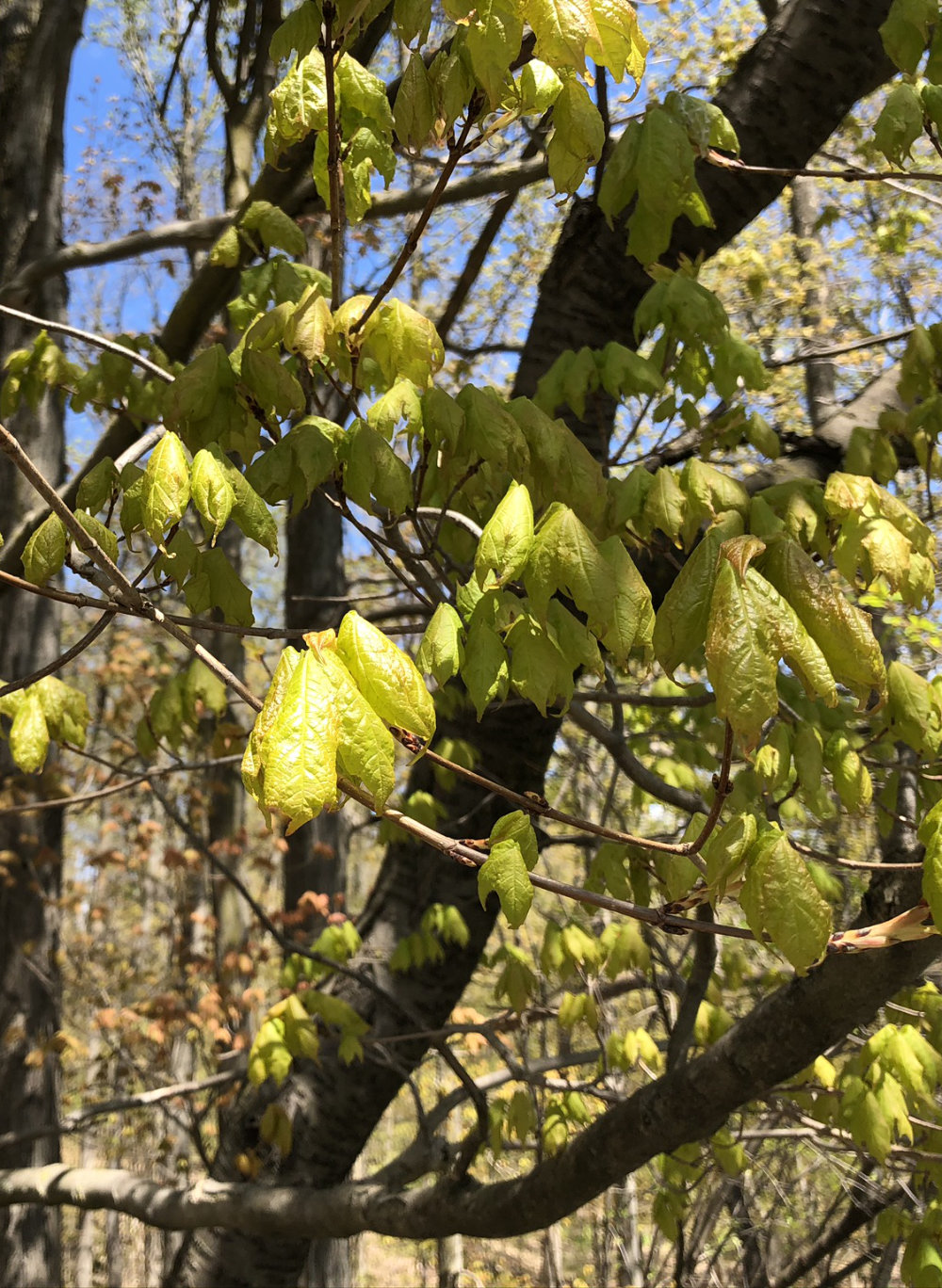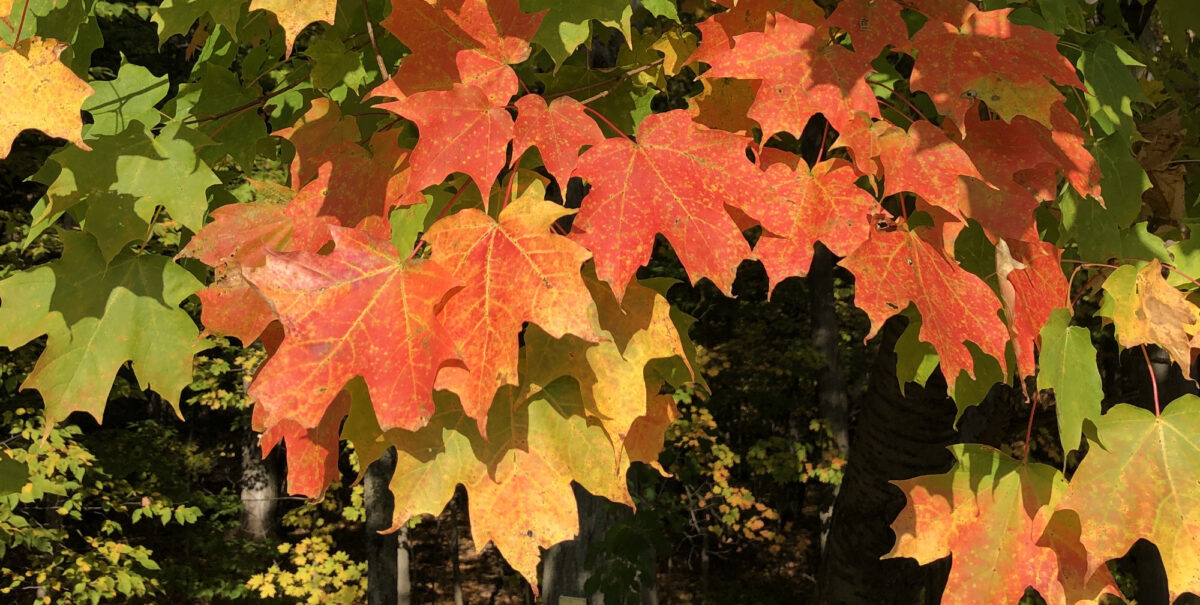How will climate change affect sugar maples and maple syrup production?

Maple syrup, beloved by many of us on our pancakes, comes from extracting sap from sugar maple trees and then boiling it. Tapping sugar maples does not damage the trees when done properly, so sugar maple trees can produce sap for boiling for many decades. But a changing climate is likely to bring changes to what is an almost $30 million dollar industry in New York State.
Sap flows through sugar maple trees when the weather goes through a freeze-thaw cycle with very cold nights and daytime temperatures above freezing. Traditionally, maple sugaring season in New York State has started in late winter to early spring, but as New York winters are warming this season is projected to shift earlier—by 15 to 30 days by the end of the 21st century.
Climate change may also affect the health of sugar maple trees. Research into this is ongoing, but studies have shown that reduced snowpack—which is projected with warmer winters—can lead to root damage and reduce the growth of tree shoots.
The ideal habitat for sugar maples is expected to shift northward as the climate warms, although recent research suggests that the northern limit of where the trees can thrive may be constrained by soil chemistry and fungi and microorganisms found in northern soils.
Recorded webinar: Sugar Maples and Climate Change (March 22, 2021) by Paleontological Research Institution (YouTube)
Projections of future sugar maple range
The maps below come from the US Department of Agriculture Forest Service's Climate Change Tree Atlas (Version 4, accessed December 2022). They show the importance value of sugar maples across the eastern United States. The importance value provides a big picture view of the influence of a tree species in a community. The higher the number, the more “important” it is. Scientists determine the importance value by measuring:
- how many sugar maples are within a particular forest
- how common it is in that forest compared to other types of trees;
- the total amount of forest area it occupies.
Map 1 shows late 20th-century importance values for sugar maple, and Maps 2 and 3 show future projections for two different scenarios. These scenarios are inputs to climate models, and they reflect the choices we make to reduce (or not reduce) emissions of carbon dioxide and other gases that trap heat in the atmosphere.
1. Historical

Importance value of sugar maples during the baseline period of 1961-1990.
2. Low-emissions projection

Projected importance value of sugar maples at the end of the 21st century (2070-2100) based on the average of three global climate models, assuming that we significantly reduce our carbon dioxide emissions (emissions scenario RCP4.5)
3. High-emissions projection

Projected importance value of sugar maples at the end of the 21st century (2070-2100) based on the average of three global climate models, if we continue to emit carbon dioxide at a high rate (emissions scenario RCP8.5)

The Climate Change Tree Atlas (Version 4, accessed December 2022) provides the following interpretation of the model results:
"Sugar maple is widely distributed (21.3% of area), dense, and with high Importance Value across much of the northern 2/3 of the Eastern US. It ranks fourth in overall abundance across the eastern US, behind loblolly pine, red maple and sweetgum. It rates as highly adaptable although under persistent drought or other stresses, it would likely decline. In contrast to our earlier models which showed substantial habitat decline in the south under harsh climate change, the species is modeled to decline only modestly, so we rate it with a very good capacity to cope, and to be a good infill species."
(Climate Change Tree Atlas: Peters, M.P., Prasad, A.M., Matthews, S.N., & Iverson, L.R. 2020. Climate change tree atlas, Version 4. U.S. Forest Service, Northern Research Station and Northern Institute of Applied Climate Science, Delaware, OH.)

Contribute to sugar maple research by being a community scientist
You can participate in a tree phenology community science project at the Cayuga Nature Center, and by doing this you can learn how to participate at home with a tree in your neighborhood.
Phenology is the study of cyclical changes in plant and animal life. At the Cayuga Nature Center, visitors can collect data on trees that we have registered with the USA National Phenology Network, including a sugar maple. Researchers use the data to understand how seasonal cycles in trees are changing, to assess how trees and ecosystems are vulnerable to climate change, and to help make decisions about how to manage forests.
Videos
Cayuga Nature Center sugarbush
This video shows how we make maple syrup at the Cayuga Nature Center
History and science of maple syrup production
In this CORNELLCAST video, Dr. Brian Chabot, Emeritus Professor at Cornell University, talks about the history of maple syrup production by Native Americans and European settlers, the properties of sugar maple trees, and how to tap a tree. You can also learn about modern maple syrup production technology and methods.
Learn more
Learn about the effect of climate change on plants and animals in the Cayuga Nature Center’s online exhibit: Climate Change in Central New York




